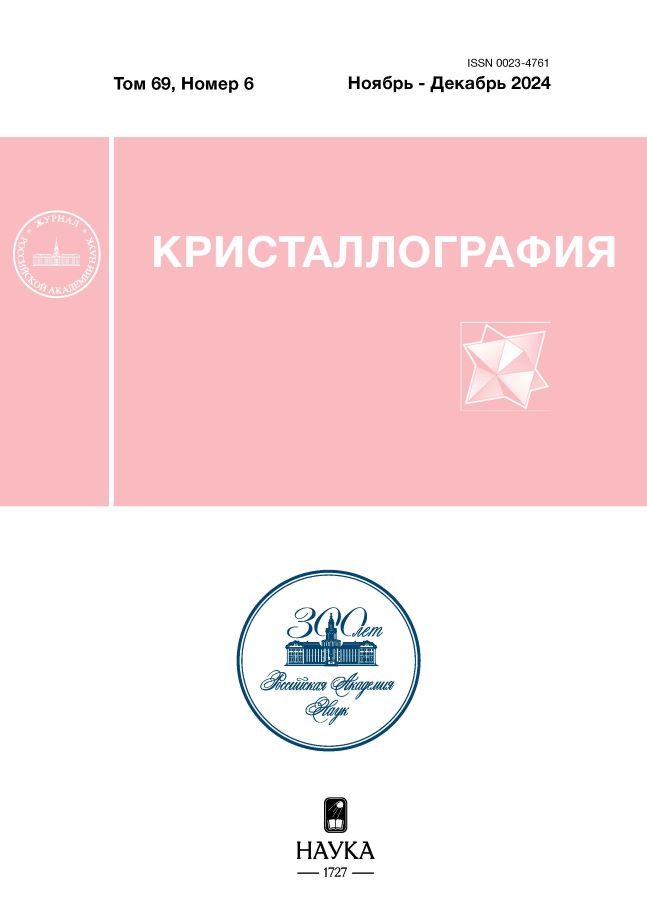Construction solutions of the eski-kermen and gorzuvit tombs
- Autores: Loboda A.Y.1, Kalinin P.I.2, Antipin A.M.1, Guryeva P.V.1, Kovalenko E.S.1, Mandrykina A.V.1, Kuzmina E.A.1, Khairedinova E.A.3, Mastykova A.V.4, Tereschenko E.Y.1, Yatsishina E.B.1
-
Afiliações:
- National Research Centre "Kurchatov Institute"
- Institute of Physicochemical and Biological Problems of Soil Science RAS
- Institute of Crimean Archaeology RAS
- Institute of Archaeology RAS
- Edição: Volume 69, Nº 6 (2024)
- Páginas: 1090-1100
- Seção: КРИСТАЛЛОГРАФИЧЕСКИЕ МЕТОДЫ В ГУМАНИТАРНЫХ НАУКАХ
- URL: https://ruspoj.com/0023-4761/article/view/673666
- DOI: https://doi.org/10.31857/S0023476124060194
- EDN: https://elibrary.ru/YFTIEI
- ID: 673666
Citar
Texto integral
Resumo
A comparative analysis of the mortars used in the construction of two burial structures in medieval Crimean cities, namely Eski-Kermen and Gorzuvit, was conducted. In both instances, lime mortar was employed. The faunal remains discovered within the lime base enabled the origin of the carbonate raw material to be determined. In the case of Eski-Kermen, the lime mortar was prepared from Eocene nummulitic limestone, which constitutes the plateau itself. In contrast, the limestone of the Upper Oxfordian deposits of the southern slopes of the Main Ridge of the Crimean Mountains was used in Gorzuvit. As technological admixtures in Gorzuvites, rounded large pebbles (of river or sea origin), sand, presumably of river origin, and plant remains were employed. On the Eski-Kermen plateau, due to the limited availability of resources, mainly only heterogeneous, fairly large fragments of crushed, partially burnt ceramics were used. The obtained results confirm the hypothesis that local changes in the formulation of solutions are associated with the availability of raw materials near the construction site, both natural and anthropogenic.
Texto integral
Sobre autores
A. Loboda
National Research Centre "Kurchatov Institute"
Autor responsável pela correspondência
Email: lobodaau@mail.ru
Rússia, Moscow
P. Kalinin
Institute of Physicochemical and Biological Problems of Soil Science RAS
Email: lobodaau@mail.ru
Rússia, Pushchino
A. Antipin
National Research Centre "Kurchatov Institute"
Email: lobodaau@mail.ru
Rússia, Moscow
P. Guryeva
National Research Centre "Kurchatov Institute"
Email: lobodaau@mail.ru
Rússia, Moscow
E. Kovalenko
National Research Centre "Kurchatov Institute"
Email: lobodaau@mail.ru
Rússia, Moscow
A. Mandrykina
National Research Centre "Kurchatov Institute"
Email: lobodaau@mail.ru
Rússia, Moscow
E. Kuzmina
National Research Centre "Kurchatov Institute"
Email: lobodaau@mail.ru
Rússia, Moscow
E. Khairedinova
Institute of Crimean Archaeology RAS
Email: lobodaau@mail.ru
Rússia, Simferopol
A. Mastykova
Institute of Archaeology RAS
Email: lobodaau@mail.ru
Rússia, Moscow
E. Tereschenko
National Research Centre "Kurchatov Institute"
Email: lobodaau@mail.ru
Rússia, Moscow
E. Yatsishina
National Research Centre "Kurchatov Institute"
Email: lobodaau@mail.ru
Rússia, Moscow
Bibliografia
- Айбабин А.И., Хайрединова Э.А. // Античная древность и средние века. Екатеринбург: Изд-во Урал. ун-та, 2020. Вып. 48. С. 310.
- Artioli G. Scientific Methods and Cultural Heritage: An Introduction to the Application of Materials Science to Archaeometry and Conservation Science. Oxford, UK: Oxford University Press, 2010. 554 p.
- Friesem D., Abadi I., Shaham D., Grosman L. // Evolutionary Human Sciences. 2019. V. 1. E9. https://doi.org/10.1017/ehs.2019.9
- Витрувий. “Десять книг об архитектуре” / Пер. Петровского Ф.А. Т. 1. М.: Изд-во Всесоюз. академии архитектуры, 1936. 331 с.
- Оустерхаут Р. Византийские строители. Киев; М.: КОРВИН ПРЕСС, 2005. 331 с.
- Лобода А.Ю., Калинин П.И., Антипин А.М. и др. // Материалы по археологии, истории и этнографии Таврии. 2023. Вып. 28. С. 323.
- Мастыкова А.В. // КСИА. 2020. № 260. С. 407.
- Голофаст Л.А., Мастыкова А.В. // Материалы по археологии, истории и этнографии Таврии. 2018. Вып. 23. С. 359.
- Добровольская М.В., Мастыкова А.В. // КСИА. 2020. № 260. С. 428.
- Мастыкова А.В. // Города, селища, могильники. Раскопки 2017. Материалы спасательных археологических исследований. Т. 25. / Отв. ред. Энговатова А.В. М.: ИА РАН, 2018. С. 186.
- Значко-Яворский И.Л. Очерки истории вяжущих веществ: от древнейших времен до середины XIX в. М.; Л.: Изд-во АН СССР, 1963. 496 с.
- Якобсон А.Л. // Материалы по истории и археологии СССР. М.; Л.: Изд-во АН СССР, 1959. № 63. 364 с.
- Кирилко В.П. // Studia in honorem professoris Borisi Borisov. Велико Търново: ИВИС, 2016.
- Хайрединова Э.А. // Вестн. Волгоград. гос. ун-та. Сер. 4. История. Регионоведение. Международные отношения. 2023. Т. 28. № 6. С. 25. https://doi.org/10.15688/jvolsu4.2023.6.3
- Черкасов С.Д., Акинин О.И., Корнеева Е.А., Сабри М.М. // Строительство уникальных зданий и сооружений. 2018. Вып. 8. С. 63. https://doi.org/10.18720/CUBS.71.6
- Руденко А.П., Намсараев З.Б., Комова А.В. и др. // Российские нанотехнологии. 2024. Т. 19. № 1. С. 133.
- Геологическая карта Крыма, масштаб: 1:1000000 / Отв. ред. Муратов М.В. М.: ВСЕГЕИ, 1967.
Arquivos suplementares
















